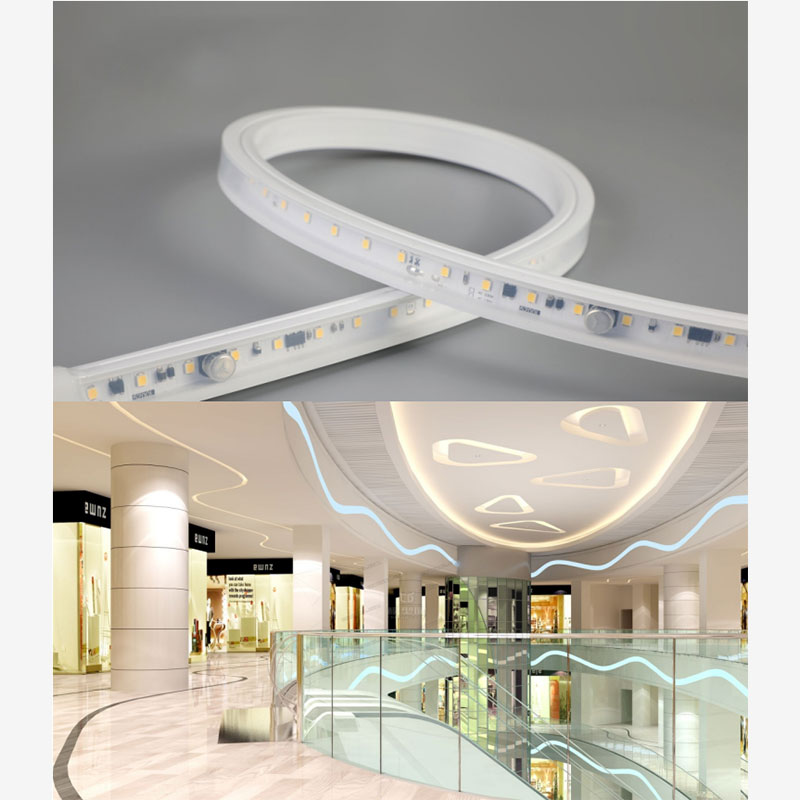- English
- Español
- Português
- русский
- Français
- 日本語
- Deutsch
- tiếng Việt
- Italiano
- Nederlands
- ภาษาไทย
- Polski
- 한국어
- Svenska
- magyar
- Malay
- বাংলা ভাষার
- Dansk
- Suomi
- हिन्दी
- Pilipino
- Türkçe
- Gaeilge
- العربية
- Indonesia
- Norsk
- تمل
- český
- ελληνικά
- український
- Javanese
- فارسی
- தமிழ்
- తెలుగు
- नेपाली
- Burmese
- български
- ລາວ
- Latine
- Қазақша
- Euskal
- Azərbaycan
- Slovenský jazyk
- Македонски
- Lietuvos
- Eesti Keel
- Română
- Slovenski
- मराठी
- Srpski језик
The difference between low-voltage light strips and high-voltage light strips
2024-05-25
The mainless lamp style has become a big trend in the home furnishing industry. The frequency of use of "light strips" has become a tool used by many designers to light up the space. It can not only enrich the space, but also create a visual sense of light and dark levels. But when buying light strips, there are always various questions, such as which one to buy, high-voltage light strips or low-voltage light strips? What's the difference between them? Now let’s scientifically analyze which light strip is more durable!

1. Different specifications and lengths
A common type of low-voltage light strip, the most commonly used ones are 12V and 24V. Some low-voltage lamps have plastic protective covers, while others do not. The protective covers are not to prevent electric shock, but the usage requirements are slightly different. For example, top-illuminated cloth lamps are prone to dust and dust, so it is more recommended to use ones with protective covers. Easy to clean.
Because the substrate of low-voltage light strips is relatively thin and the ability to overcurrent is relatively weak, most low-voltage light strips are 5m long. If the usage scenario requires a long light strip, multiple wiring locations and multiple drivers will be needed. In addition, there are also 20m strips, and the substrate of the light strip is made thicker to increase the current carrying capacity. Most high-voltage light strips are 220V, and the length of high-voltage light strips can be continuous up to 100m. Relatively speaking, the power of high-voltage light strips will be relatively high, and some can reach 1000 lm or even 1500 lm per meter.
2. Cutting lengths vary
When the low-voltage light strip needs to be cut, check the cutting opening mark on the surface. There is a scissor logo on every short section of the low-voltage light strip, indicating that this place can be cut. How often do you usually cut the strip? It depends on the working voltage of the light strip. For example, a 24V light strip has six beads and one scissor opening. Generally, the length of each section is 10cm. Like some 12V, there are 3 beads per cut, about 5cm. High-voltage light strips are generally cut every 1m or even every 2m. Remember not to cut from the middle (it needs to be cut across the whole meter), otherwise the entire set of lights will not light up.
3. Different application scenarios
Low-voltage flexible light strips are very convenient to use. After tearing off the protective paper from the adhesive backing, you can stick it in narrow places, such as bookcases, showcases, kitchens, etc. The shape can be changed, such as turning, arcing, etc. High-voltage light strips are generally equipped with buckles for fixed installation. Since the entire lamp has a 220V high voltage, it would be more dangerous if the high-voltage lamp strip is used in places that are easily accessible, such as steps and guardrails. Therefore, it is recommended that high-voltage light strips be used in places that are relatively high and cannot be touched by people, such as ceiling light troughs. Pay attention to the use of high-voltage light strips with protective covers.
4. Driver selection
When installing the low-voltage light strip, the DC power driver must be installed in advance. After the DC power driver is installed, it must be debugged until the debugged voltage is consistent with the requirements of the low-voltage light strip before it can be used. This requires special attention. a little. Generally, high-voltage light strips have strobes, so you must choose a suitable driver. It can be driven by a high-voltage driver. Generally, it can be configured directly in the factory. It can work normally when connected to a 220-volt power supply.



